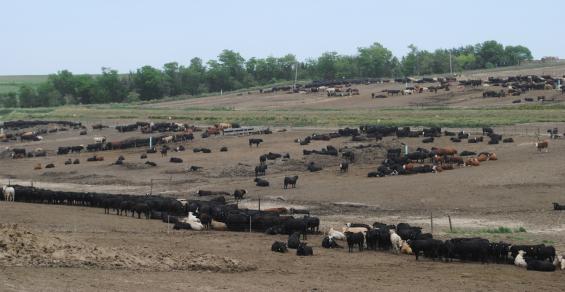Finding good help is hard to do, but retaining good employees is often even more difficult.
Finding and retaining good employees for the feedlot or any beef operation is challenging, even under normal circumstances. Given the current labor shortage in agriculture across the nation, it has become a major point of concern for many feedlot owners, in particular.
A recent webinar — Farm and Ranch Labor: Help Wanted Sign Posted — hosted by Nebraska Farm Bureau senior economist Jay Rempe, offered tips for filling employment needs. During the webinar, Joe Horner, University of Missouri Extension agriculture economist, said that unemployment rates in many rural states are quite low.
Nebraska, as an example, has the lowest unemployment rate in the U.S. at 1.8%. “There isn’t much labor out there,” Horner said, “so it’s hard for farmers to feel comfortable about where they are in the farm labor situation.”
Ag employers may think that “luck” is involved in finding and keeping long-term employees, but there are deliberate considerations that can produce optimal results.
4 big questions
Horner said there are four big questions feedlot owners and ag operators in general need to answer: Do we understand and comply with federal and state labor laws? Do we recruit and retain employees well? Do we effectively train employees? Do we have human resources standard operational procedures that we follow?
Farm employees have become a bigger risk these days. “Production risk on marketing and weather, we are used to that,” Horner said. “But as we employ more and more people and we use bigger equipment, these can be major threats to our business. What can we do to reduce that risk?”
Ryan Milhollin, MU Extension agriculture economist, said that 25% turnover in employees isn’t that unlikely. “It could be higher or lower,” he said. “Replacing employees can cost 20% or more of a former employee’s salary, so it is not easy. What can you do to avoid high turnover, improve retention and enhance worker productivity to minimize risk?”
Assuming producers recruit and hire top-quality employees, retention could be the key.
Perks pay off
While many employers assume that monetary compensation is the only thing that matters to potential employees, there are other ways to offer benefits to good employees to help them want to stay on for the long haul, such as paid time off and health insurance, Milhollin said.
Offering housing, beef or other food items, work clothes, use of a farm vehicle, and other types of perks can be part of the package. Incentive pay may also be offered, with performance-based pay that is related back to the operation goals. Milhollin also mentioned the idea of formal or informal bonuses, along with profit-sharing or stock ownership.
“Promote employees who have earned it, and offer training and continued education,” he suggested. “Provide spontaneous feedback and give public recognition, so you let employees know that they did a good job.”
Milhollin also suggested supporting the concept of a positive work and life balance, so employees have a life outside of work. The practices farmers choose to compensate their employees don’t have to be expensive, he said. “Offer things that you want employees to value. Get to know your workers, and that will help with job retention.”
Learn more about hiring, onboarding, training and retention of feedlot and farm employees in the 47-page Missouri Farm Labor Guide available at extension.missouri.edu.




